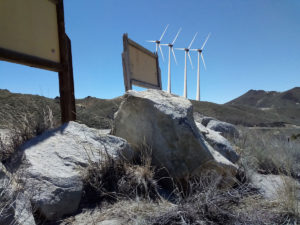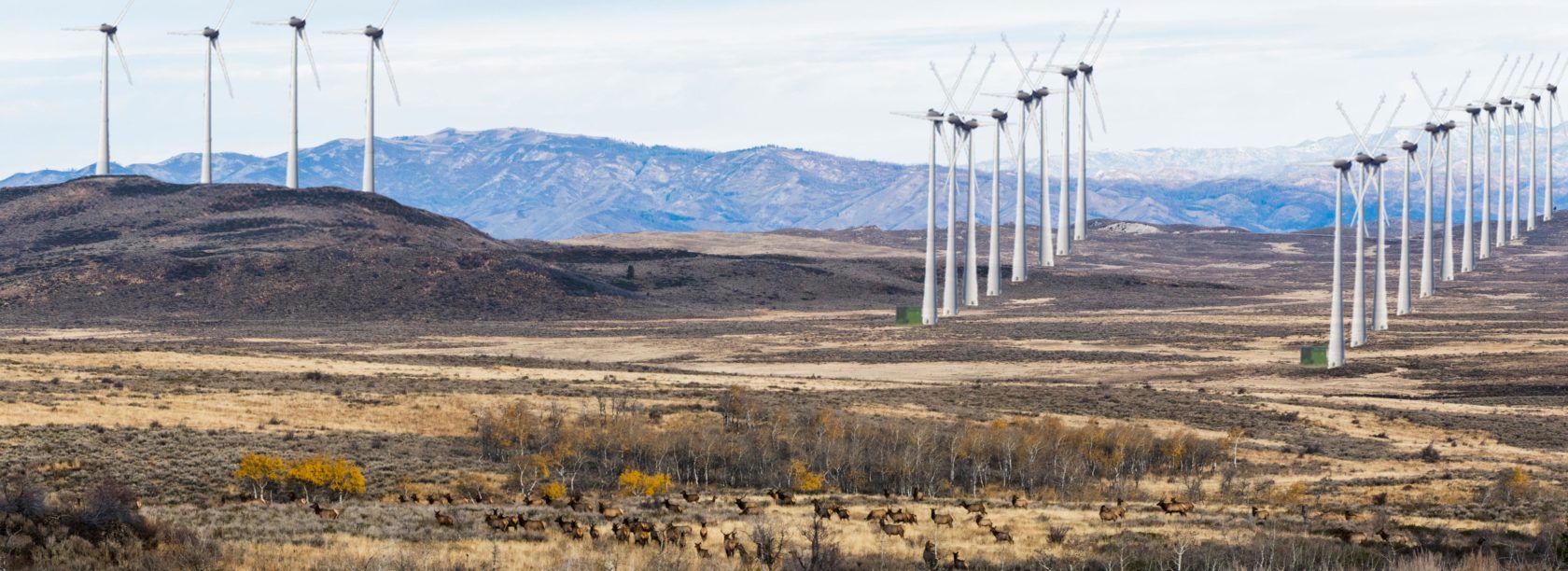Originally published by the Yakima Herald on May 5, 2018.
The following article is an editorial written about a proposed wind farm that could be built just north of the town of Ellensburg, Washington. Ellensburg is located in central Washinton just off Interstate 90.

Written By: Kathi Pritchard and Mark Pritchard | May 5, 2018
Kittitas County has an award-winning tourism sector. Yet the county will struggle to reap the benefits of recent investments when the state’s energy siting council approves its fourth energy project in the Kittitas valley just north of downtown Ellensburg.
“At almost 500 feet, nearly as tall as Seattle’s Space Needle, these will be the tallest seen on U.S. soil.” [the same size wind towers planned for Elmore County]
A French multinational corporation just asked the council to approve 31 giant turbines. At almost 500 feet, nearly as tall as Seattle’s Space Needle, these will be the tallest seen on U.S. soil. Spanning 4,400 acres along Highway 97, this energy project will threaten tourism efforts, stifling growth in local jobs and tax revenues.
The Chamber of Commerce and other local groups teamed up to create a tourism theme emphasizing the area’s rural roots such as the “Barn Quilt Trail Map”, “Hometown Holidays” and the Ellensburg Rodeo. The county carved a niche that complements more established promotions like Yakima’s wine country and Leavenworth. These strategies depend on the same asset to draw tourists, the scenic attractiveness of rural landscapes.

Gov. Jay Inslee recently recognized tourism as a major vehicle for building stronger rural communities by approving tourism bill SB 5251. Washington’s Tourism Office aims to promote natural wonders, hiking, and outdoor recreation opportunities throughout the state. However, tourism assets become liabilities when energy developments dominate the landscape.
“Studies report wind turbines dramatically decrease the attractiveness of a destination for tourists.”
Research from Europe, where wind turbines have operated for 25 years, offers insights for decision-makers here. Studies report wind turbines dramatically decrease the attractiveness of a destination for tourists. A 2015 study of 2200 German communities show taller turbines create the strongest negative impact on tourism. Research from Scotland is making similar headlines that 55 percent of tourists are “less likely to visit areas of the countryside industrialized by giant turbines.” Deploying turbines across Scotland’s scenic highlands also reduced tourism jobs by 7 to 14 percent in affected areas. Scotland’s policy outlines a standard for compensating communities, roughly $7,000 per megawatt from energy developers. Elected officials advocate for “a fair share in the revenues generated from their natural resources.”
“55 percent of tourists are “less likely to visit areas of the countryside industrialized by giant turbines.”
Scotland and Germany are not alone in voicing concerns. England’s popular Lake District will dismantle wind turbines this summer. Local groups say dismantling turbines restores views. In the U.S., rural communities face the same dilemma.

Tourism will not flourish when over half of tourists avoid visiting areas with industrial-scale energy.
Tourism is the state’s fourth largest industry and weathers economic downturns better than most. State employment data report tourism delivered the largest increase in Kittitas County jobs from 2004-2016. Tourism jobs increased by 66 percent locally, with accommodations and food services accounting the majority of all new jobs added. By contrast, government jobs, including Central Washington University, decreased by 22 percent during the same period.
“Looking at these data, it is safe to say that tourism is extremely important to the Kittitas County labor market,” said Don Meseck, the state’s regional economist. No other non-farm industry makes as strong a contribution to the local economy.
For tourism to grow in our rural communities, Washington needs a moratorium on permitting new energy projects. Policymakers should consider land-use conflicts that threaten the scenic vistas vital to tourism’s success.
“We cannot afford to damage our natural assets in ways that would deter visitors from returning,” according to Gov. Paul LePage.
As a state, we could learn from Maine’s moratorium on permits for new wind turbines. Gauging effects on rural tourism is an important issue for our state. “We cannot afford to damage our natural assets in ways that would deter visitors from returning,” according to Gov. Paul LePage.
A moratorium on energy siting is critical here for tourism’s development. A statewide vision of tourism’s future and the long-term economic welfare of our communities is at stake.
* Kathi Pritchard served as county director of tourism in Oregon, promoting the state to U.S. and international markets, and more recently worked as a communications consultant for British Columbia’s Ministry of the Attorney General.
* Mark Pritchard, PhD, is a professor in the College of Business at Central Washington University. He lectures on destination branding to graduate students in France and the U.S., and has served as a consultant for state tourism agencies in British Columbia, the Yukon Territory, Arizona, Oregon, and Western Australia. They live in Ellensburg.
Permission to reuse this guest editorial was granted by Professor Mark Pritchard on June 1, 2018.
Permission to reuse this article was granted by Frank Purdy, Editor of the Yakima Herald-Republic on May 30, 2018.
See: https://www.yakimaherald.com/opinion/editorials/guest_editorials/energy-sprawl-threatens-kittitas-county-tourism/article_46749a3a-4fdc-11e8-91dc-b3ca1f7908bb.html
